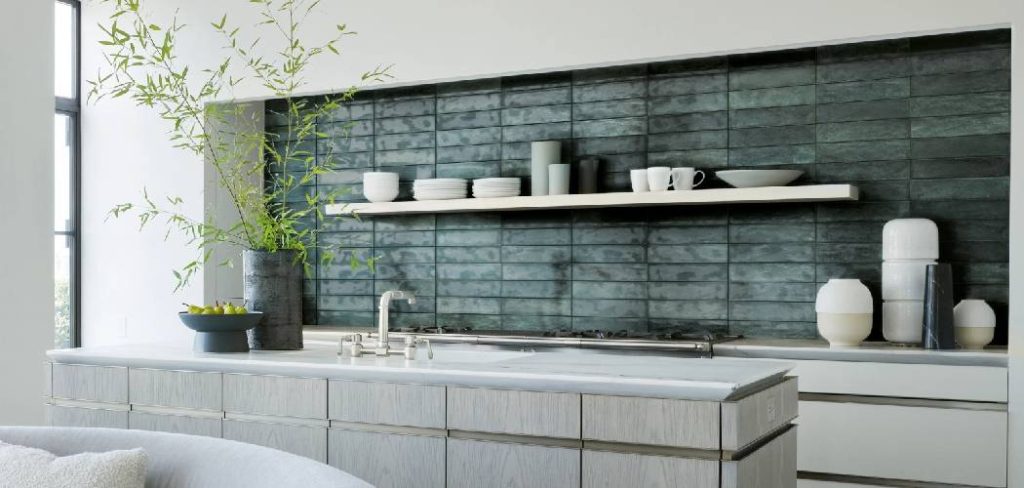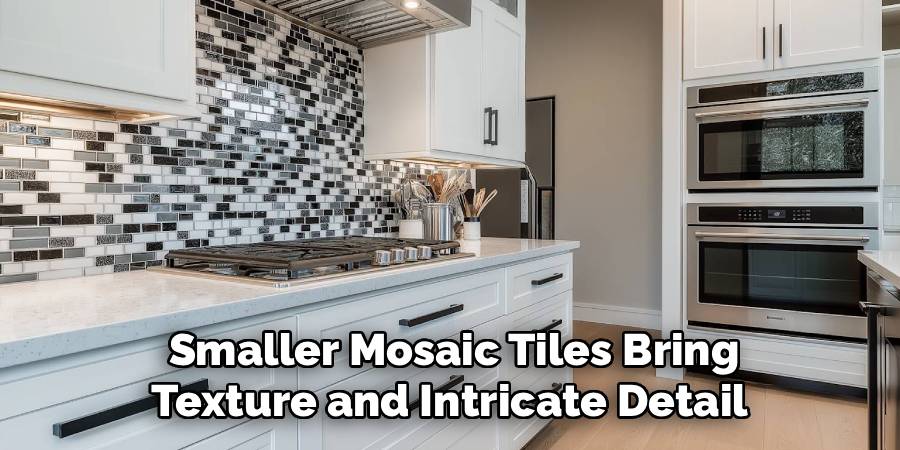When it comes to renovating or designing a kitchen, one question that often arises is how to choose backsplash. A backsplash may seem like a small detail compared to cabinets or countertops, but in reality, it has the power to completely transform the look and feel of the space. It is both functional and decorative. It shields your walls from stains, grease, and moisture while also giving your kitchen or bathroom a signature design element.

With countless choices in materials, colors, and styles, homeowners often find themselves overwhelmed. If you are wondering how to choose backsplash that suits your needs, this comprehensive guide explores ten effective methods that will help you make a confident decision.
10 Methods Step by Step
Begin with the Function of the Backsplash
Before diving into aesthetic choices, it is important to understand the practical purpose of a backsplash. Its primary role is to protect walls from food splatters, water stains, and daily wear. In busy kitchens, this protection is vital. However, function alone does not dictate your choice. The backsplash also contributes to the overall design flow of your kitchen or bathroom.
When learning how to choose backsplash, you should first decide whether you want it to primarily serve a practical role, a decorative role, or both. A purely functional backsplash may lean toward simple ceramic tiles or easy-to-clean glass panels. On the other hand, if design is just as important, unique shapes, patterns, and bold materials can become a focal point.
Coordinate with Countertops for a Harmonious Look
One of the biggest considerations in deciding how to choose backsplash is how well it pairs with your countertops. Since countertops often dominate the visual field, your backsplash must either blend smoothly or provide intentional contrast.
If your countertops already have strong patterns—like veined marble or speckled granite—it is often wise to select a simple, understated backsplash that allows the countertop to shine. However, if your countertops are plain and solid in color, you can take more risks with bold or textured backsplash designs. Bringing home a small sample of your countertop material and comparing it with backsplash samples side by side is one of the smartest strategies to ensure visual harmony.
Choose Tile Sizes and Layouts That Suit Your Space
Tile size and layout are often underestimated when thinking about how to choose backsplash, yet they play a crucial role in the final appearance. The size of your tiles should match the proportions of your kitchen or bathroom.

Large-format tiles create a clean and modern feel with minimal grout lines, which makes them easier to clean. Smaller mosaic tiles bring texture and intricate detail but require more upkeep due to multiple grout lines. Subway tiles remain timeless and versatile, while unique options such as hexagons, herringbone, or arabesque layouts add contemporary character. Always consider the size of your room and the effect you want to achieve before finalizing tile dimensions and layout.
Select Colors That Reflect Your Style and Mood
Color selection is often the most exciting part of deciding how to choose backsplash. Colors influence mood, perception of space, and the overall theme of your kitchen.
Neutral tones such as white, cream, beige, or gray are timeless and versatile, blending easily with most design styles. Bold colors like blue, emerald, or even red can inject energy and personality, making the backsplash the centerpiece of the room. Dark shades such as black or charcoal offer drama and sophistication but can make a small space feel more confined. Light colors, on the other hand, open up compact kitchens and reflect more natural light.
When choosing colors, think both short-term and long-term. While bold colors may look trendy today, you should ensure they will not feel outdated in a few years. If you are hesitant, opt for a neutral palette and bring in boldness through accessories.
Explore Different Materials Beyond the Usual Ceramic
When people ask how to choose backsplash, they often think of ceramic tiles first. While ceramic and porcelain are excellent options, there is a wide range of other materials to consider.
Glass tiles add brightness and a reflective quality, making small kitchens feel larger. Natural stones such as marble, slate, or travertine add luxury and timeless appeal but usually require sealing and extra care. Metal backsplashes—like stainless steel, aluminum, or copper—give a modern, industrial vibe and are easy to clean. Wood and reclaimed materials bring warmth and rustic character, though they must be treated for durability. For renters or budget-conscious homeowners, peel-and-stick tiles provide a cost-effective and DIY-friendly solution.
Each material has pros and cons. Think carefully about durability, maintenance, and budget before deciding.
Pay Attention to the Grout and Its Effect on the Design
Many homeowners focus solely on tile choice and forget that grout is equally important in determining the overall look. When evaluating how to choose backsplash, grout color and quality deserve serious attention.
If you prefer a seamless look, choose grout that matches your tile color. This makes the backsplash look subtle and unified. For a bold effect, contrasting grout works well—for example, white subway tiles with black grout create a graphic, eye-catching design. Neutral grout colors are a safe middle ground that balance visibility with subtlety.
Maintenance should also guide your grout choice. Light-colored grout tends to stain over time, while darker grout can conceal dirt but may fade if not properly sealed. Investing in high-quality, stain-resistant grout can save maintenance headaches in the future.
Decide Whether the Backsplash Should Be a Focal Point
When thinking about how to choose backsplash, you must decide whether you want the backsplash to act as the main focal point or as a background element. This choice will influence material, color, and pattern decisions.
If you want your backsplash to make a statement, consider bold patterned tiles, metallic finishes, or textured stone. Positioning these dramatic designs behind the stove or sink can create a stunning feature wall. Alternatively, if you want the backsplash to serve as a subtle backdrop, choose neutral tones and simple designs that blend seamlessly with other elements in the room. Both approaches can be effective, depending on your style preferences and overall kitchen design goals.
Balance Budget Considerations with Long-Term Quality
Budget is a significant factor when deciding how to choose backsplash. There are options for every price range, from very affordable to high-end luxury.
Ceramic, porcelain, and peel-and-stick backsplashes are cost-effective and widely available. Glass tiles and mid-range ceramics add sophistication without breaking the bank. For those who want a premium look, natural stone, custom mosaics, or designer tiles deliver elegance but at a higher price point.
Remember that installation costs also vary. Complex patterns and smaller tiles usually require more time and labor, increasing overall expenses. A smart strategy is to use high-end materials in a small accent area while relying on budget-friendly tiles for the rest of the wall. This way, you achieve a luxurious look without overspending.
Consider Installation and Maintenance Requirements
When figuring out how to choose backsplash, do not overlook installation and maintenance requirements. Some materials are easy to install yourself, while others demand professional expertise.
Peel-and-stick tiles or large-format tiles are DIY-friendly, making them suitable for quick upgrades. Mosaic tiles, intricate patterns, and natural stone often require skilled installation to achieve a flawless finish. Maintenance is another critical factor. Glass, stainless steel, and glazed ceramic tiles are easy to wipe clean, while porous natural stones need regular sealing. Textured tiles can trap grease, requiring more effort during cleaning.
Choose a backsplash that fits your lifestyle. If you cook often and need easy upkeep, prioritize low-maintenance options. If design and uniqueness are your top priorities, be prepared for a little extra care.
Aim for a Balance Between Timelessness and Personality
Trends come and go, but your backsplash is a long-term investment. When learning how to choose backsplash, it is wise to strike a balance between timeless appeal and personal expression.
Classic options like white subway tiles, marble, or neutral shades never go out of style and retain resale value. However, your backsplash should also reflect your personality. If you love bold designs, consider using them in a small accent wall or within a limited section rather than across the entire kitchen. This way, you can enjoy your unique style without risking an outdated look in the future.
Ultimately, the best backsplash is one that feels authentic to you while remaining adaptable to changing trends and tastes.
Conclusion
If you have ever wondered how to choose backsplash that truly works for your kitchen or bathroom, the answer lies in balancing style, function, and practicality. A backsplash is not merely a protective layer for your walls but a design element that defines the personality of your space.
By following the ten methods outlined—starting with understanding function, coordinating with countertops, selecting suitable tile sizes and colors, exploring materials, paying attention to grout, deciding on focal points, balancing budget, considering installation and maintenance, and aiming for timeless yet personal style—you will have the confidence to select a backsplash that enhances both beauty and functionality.
The perfect backsplash is the one that makes your everyday routines easier while also making you smile every time you walk into your kitchen. With careful planning and thoughtful choices, your backsplash can become the finishing touch that ties your entire design together.
Author Bio – Ashraful Hossain
Ashraful Hossain is a skilled interior design specialist, SEO expert, and creative author with over six years of experience in crafting distinctive and functional interiors. His portfolio spans residential, commercial, and modern spaces, where he seamlessly blends aesthetics with practicality to create environments that inspire and delight.
As a dedicated author for an interior design website, Ashraful combines his design expertise with strong Search Engine Optimization (SEO) skills to create engaging, high-ranking content that connects with readers and drives traffic. His writing reflects not only his technical skills but also his deep understanding of design psychology, spatial balance, and digital visibility.
Ashraful earned his Bachelor’s Degree in Interior Architecture & Design from the Bangladesh University of Professionals, where he specialized in space planning, color theory, lighting design, and sustainable solutions. His academic journey provided him with a strong foundation in design principles, complemented by hands-on training and project experience.
Beyond his work, Ashraful stays inspired by exploring global design trends, studying architectural history, and experimenting with new creative concepts that merge modern innovation with timeless style.
Ashraful Hossain – Author Bio (Point Format)
-
Profession: Interior Design Specialist, SEO Expert, and Creative Author
-
Experience: Over 6 years of professional work in residential, commercial, and modern interior designs
-
Expertise Areas:
-
Space planning & layout optimization
-
Color theory & lighting design
-
Sustainable and functional design concepts
-
SEO-driven content writing for interior design topics
-
-
Current Role: Author for an interior design website, sharing expert tips, trends, and inspirations
-
SEO Skills: Strong knowledge of Search Engine Optimization, keyword research, and content strategy to boost online visibility
-
Educational Background:
-
Bachelor’s Degree in Interior Architecture & Design from Bangladesh University of Professionals
-
Specialized training in space planning, sustainable design, and project execution
-
-
Passions: Exploring global design trends, studying architectural history, and creating innovative concepts
-
Personal Approach: Merges creativity with functionality to design spaces that are both beautiful and practical